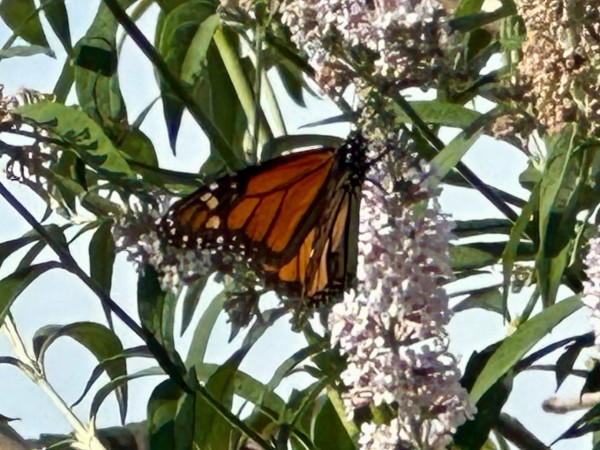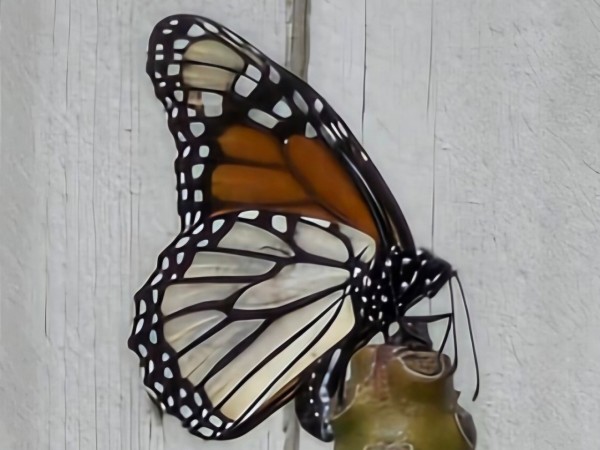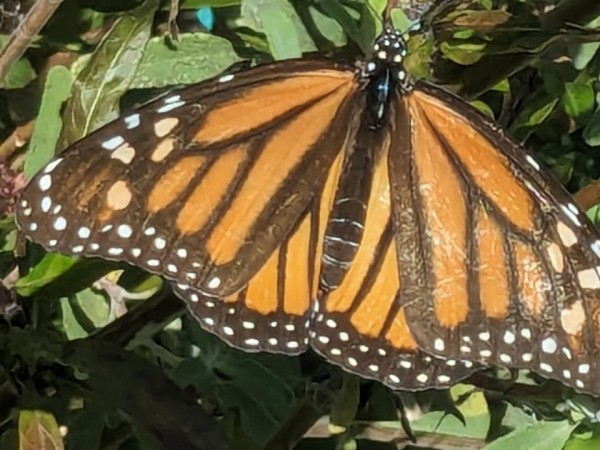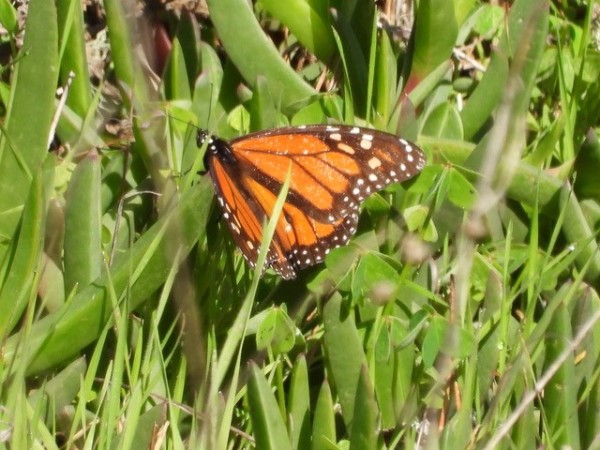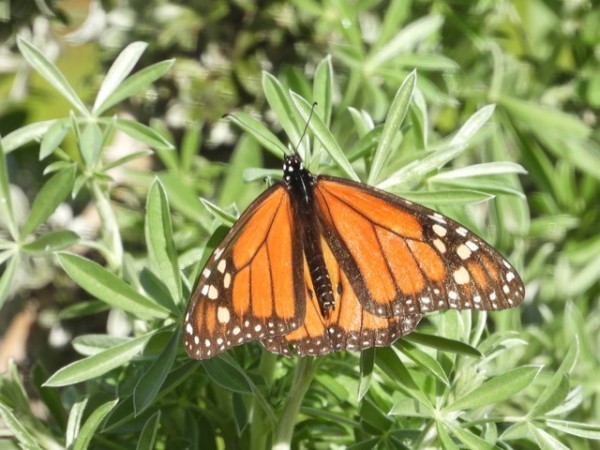2024 Spring Letter #3: Western Monarch Population News From Gail Morris
Reports Show Concentration
Adult monarch reports were mainly concentrated in Southern California for the last two weeks but also in Las Vegas, Nevada, and the greater Phoenix area in Arizona. Meanwhile reports along the California coast are dwindling as monarchs leave the region on their annual Spring Migration. Keep your eyes out for monarchs!
Recent Monarch Sightings
In recent weeks, Journey North volunteers have reported monarchs across various locations in the southwestern United States. Britni's keen eyes spotted a monarch in Las Vegas, Nevada, on February 21st, adding to the slowly growing list of sightings. Andrew, in Avondale, Arizona, shared his excitement after spotting a small adult monarch in the Garden Lakes area on February 27th, expressing intentions to capture a photo during their next encounter. And in Litchfield Park, Arizona, Lynda delighted in multiple monarch sightings throughout the week, finally seizing the chance to capture their beauty through her lens on March 12th.
Moving westward, Kim's backyard in Menifee, California, became a temporary haven for a monarch on March 1st. The butterfly gracefully rested on her plumeria plant, providing a picturesque moment before taking flight again. Meanwhile, in Burbank, California, Scott shared the thrill of spotting the season's first Monarch on March 7th, marking the beginning of their presence in the area. Further north, Gary in Santa Clara, California, observed a monarch on the same day, suspecting it might have been drying its wings near their milkweed plant.
These sightings serve as reminders of the Monarchs' enduring presence and the joy they bring to those fortunate enough to witness their graceful flights.
Be sure to visit the Journey North Maps for more information about monarch and milkweed sightings.
Reports from the Field
Stephanie Turcotte shares her final report and reflection on the overwintering season.
“That weekend, after the 2/23/24 count, was so beautiful. Numerous times I had monarchs fly through my yard and almost kiss my cheek. That’s usually the way I know when the season begins and when it ends, monarchs flying through my yard… stopping to gather nectar or stopping to rest. So while the counting does end, the season doesn’t completely stop right away. I didn’t adequately express how the monarchs continue to delight in a different way. It is always a soft exit in terms of their departure. The few monarchs that remain generally re-integrate back into the larger community and take advantage of the surrounding environment until finally you just don’t see ANY- anymore. Yes, they are more than likely the males, but that’s ok; they are still monarchs. ;-) I wonder if it’s like that in Mexico- a gentle departure to help wean the residents from their prevalent presence during the short-lived season.
“I took the first attached photo during that weekend of lovely sunny, warm weather of a male monarch resting on ice plant on the ground near my yard, a few blocks from the PG habitat. (2/24/24) Then we had our week of intermittent wind and rain, gusts up to 34 mph at times. Who knows how the monarchs that left here in the previous weeks faired as the weather events we experienced here were also north, south, and east of us in California. Yesterday, after the morning deluge, things calmed down and the sun came out. I took the 2nd monarch photo then,of another male, that landed on my native lupine. (3/3/24) Both monarchs look in decent shape considering the time of the season.
“Thank you to everyone for their contribution and effort directed toward the conservation of monarchs and other pollinators.”
A heartfelt Thank You to Stephanie for her reports throughout this overwintering season!
Send in your reports!
Please report your sightings of first-of-year monarchs, any adult monarchs, eggs, larvae as well as milkweed up. Reports are usually sparse this time of year as monarchs fly through more remote places, so please share your sightings for everyone to track their movements. Provide as much information as you can such as weather conditions (it’s okay to estimate). Your detailed description of what you see can include, but is not limited to, the monarch’s gender and activity and, if known, the type of flowers if they are nectaring.
Gail Morris is the Coordinator of the Southwest Monarch Study (www.swmonarchs.org and the Western Monarch Advocates. She is also a Monarch Watch Conservation Specialist, and the Vice President of the Central Arizona Butterfly Association. The Western Monarch Population News is based on comments provided to Gail Morris. We hope to increase the number of sightings and therefore photos and comments entered into the Journey North. We rely on the volunteers who communicate regularly with Gail and who agree to participate in our effort to increase awareness of the population of Western Monarchs. You can reach her at gail@swmonarchs.org


